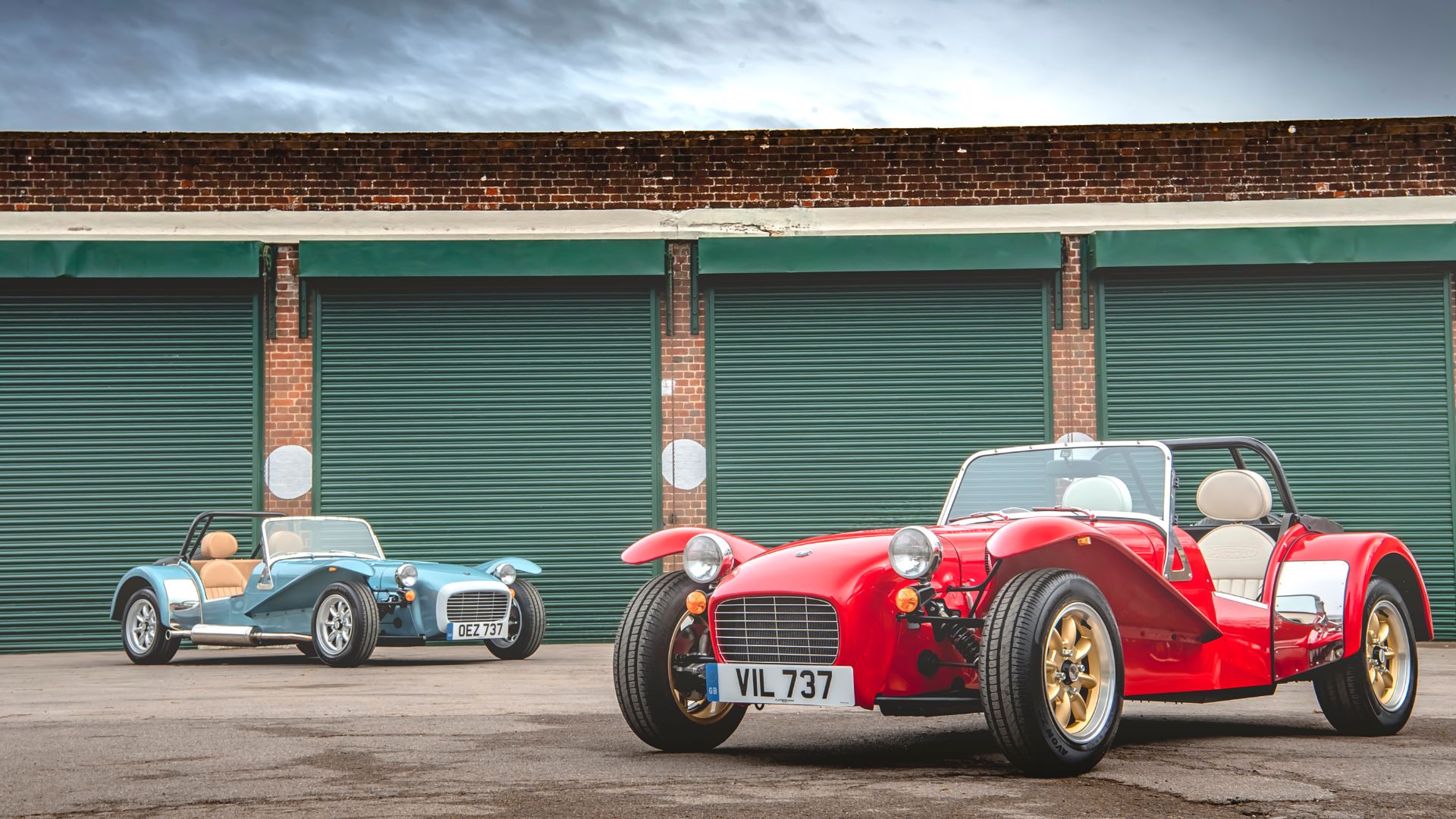
In hindsight, driving up the M1 with both the roof and doors removed wasn’t a genius idea. It was sunny when I left London, but now the clouds have congealed and a steady drizzle is blasting my scalp at 60mph.
Stretching and poppering the canvas roof into place will take at least five minutes – and besides, there is nowhere to stop. My only option, it seems, is to outrun the rain.
Yep, it transpires that if you drive at the legal limit – or, umm, slightly beyond – in a Caterham Seven, light rain will simply skim over your head and you stay dry. Until you’re forced to slow down for 50mph average speed cameras, that is…
Wet play
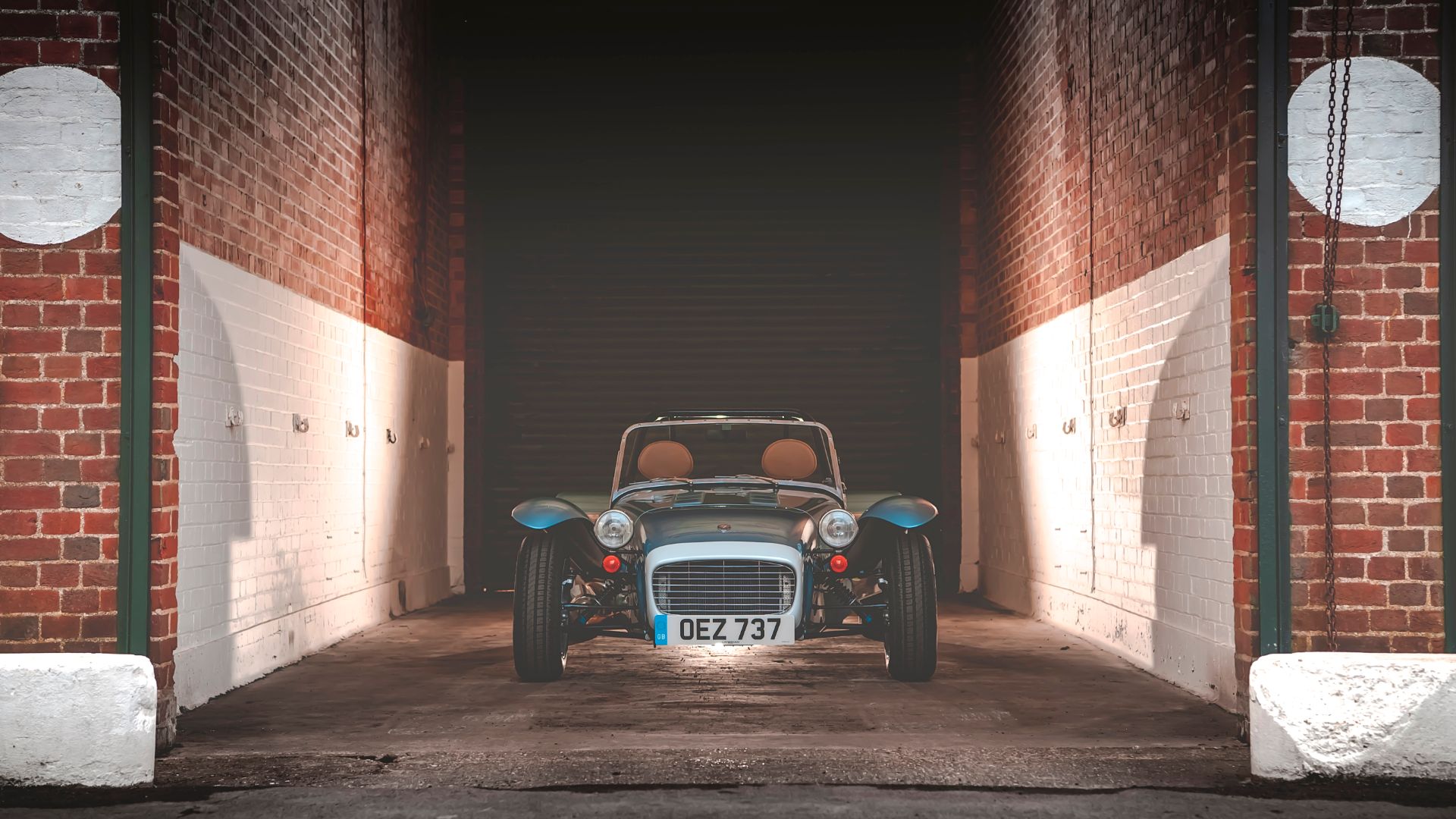
In fairness, the Caterham isn’t a motorway sort of car. Its direct ancestor, the Lotus Seven, was launched in 1957, two years before the first section of the M1 even opened (J5 Watford to J18 Rugby, since you ask).
This particular Caterham isn’t a racetrack sort of car either. Unlike some of its siblings, which have manic engines, roll cages and chewing gum tyres, the Super Seven 1600 is aimed squarely at the British B-road.
Thankfully, that’s where I’m headed, now in slightly soggy clothes, but with spirits undamped. Perhaps I’ll just just put the roof up and heater on first.
Rose-tinted roadsters
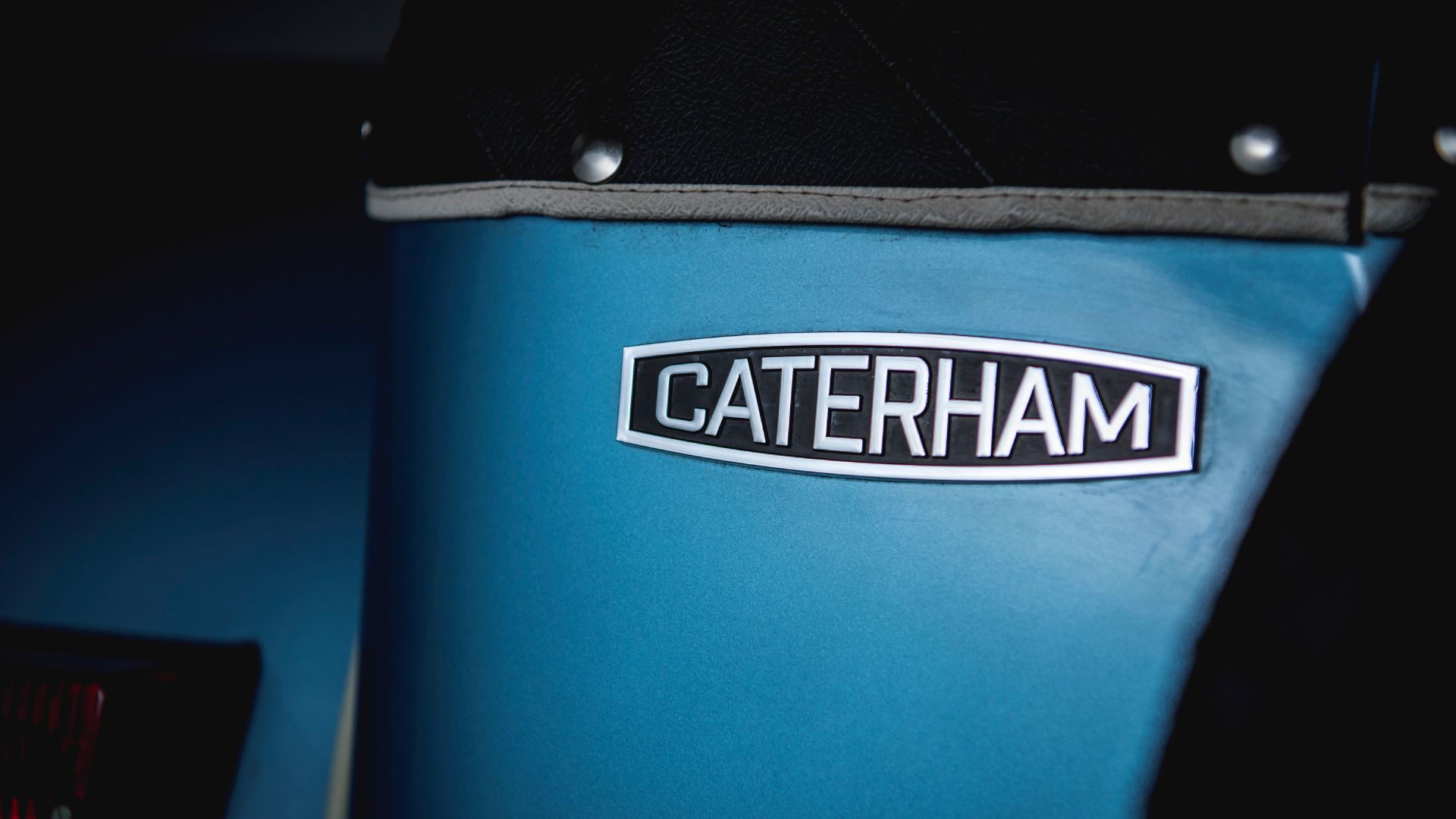
Remember the 2016 Caterham Seven Sprint? This limited edition combined classic styling with a three-cylinder Suzuki engine, and was an instant hit: all 60 cars sold within a week. Caterham then repeated the same trick with the 2017 Supersprint, with 60 cars snapped up in just six hours.
Nostalgia clearly sells, then. And while a cynic might suggest that a ‘modern Seven’ is an oxymoron, there is something timeless about a traditional British sports car.
As road-trips go, ‘Caterham to Caterham’ isn’t very ambitious, but still…
— Tim Pitt (@timpitt100) April 1, 2021
This was the original Caterham Cars showroom when I was growing up – now converted into luxury flats. pic.twitter.com/BMnFIPCgHo
That’s where the Super Seven 1600 comes in. Now a production model, rather than a limited-run special, it costs from £33,495 – a hefty £6,000 more than the Seven 270, which develops an identical 137hp. Money well spent?
Flares are back
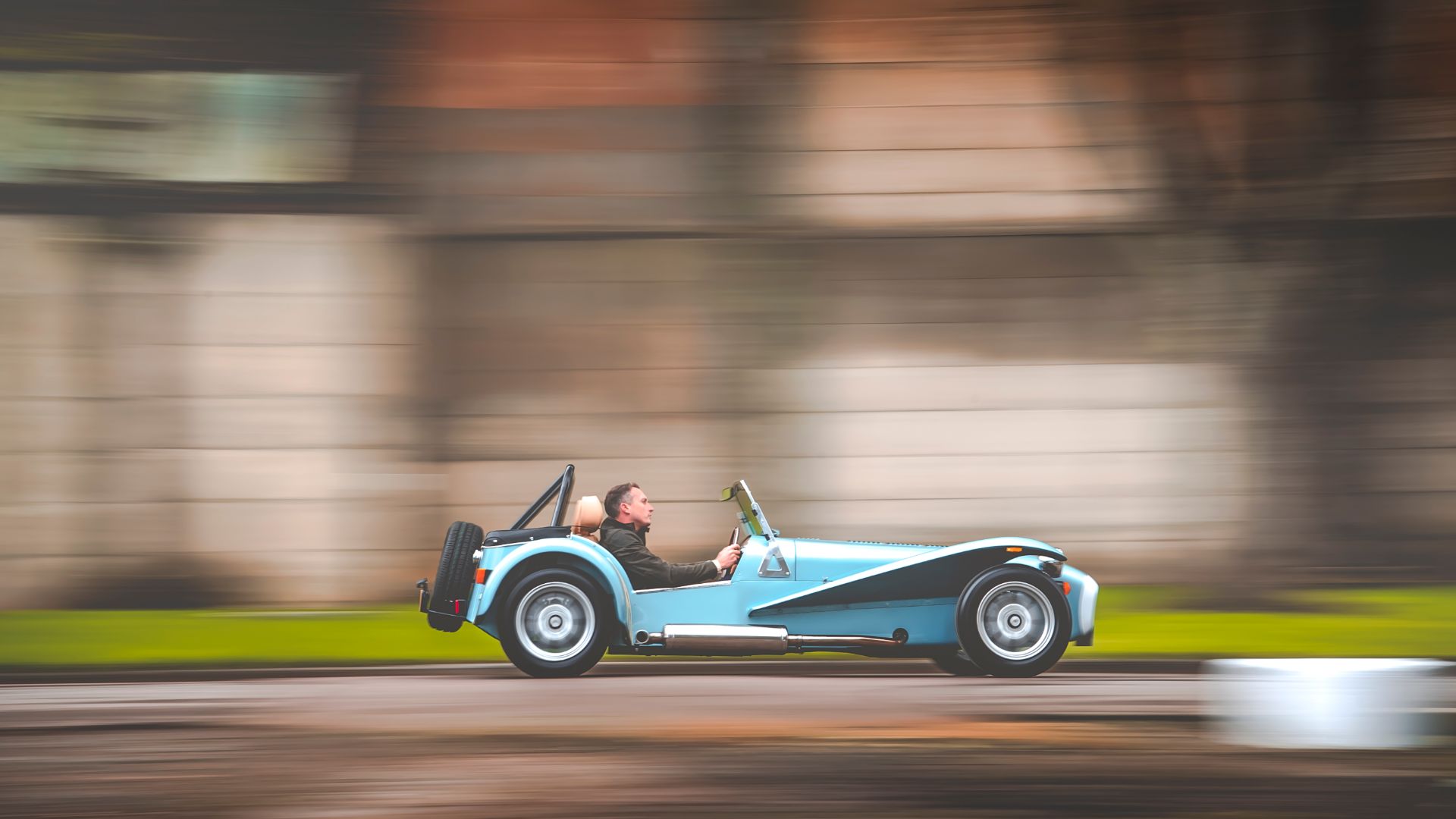
Well, it certainly looks the part. The most obvious visual change are the long, flared front fenders, filled by modest 14-inch Minilite-style alloys. Most Sevens have tyre-hugging cycle wings.
You’ll also spot the chrome grille and filler cap, polished exhaust and windscreen frame, rear-mounted spare wheel and – on standard-sized models, not the wider SV seen here – Jenvey throttle bodies that jut through the bonnet. More on these shortly.
Caterham offers a choice of six heritage paint hues, with an optional contrast noseband like the Lotus Seven from The Prisoner TV series. My test car is Caribbean Blue, a former Aston Martin colour.
Roof not included
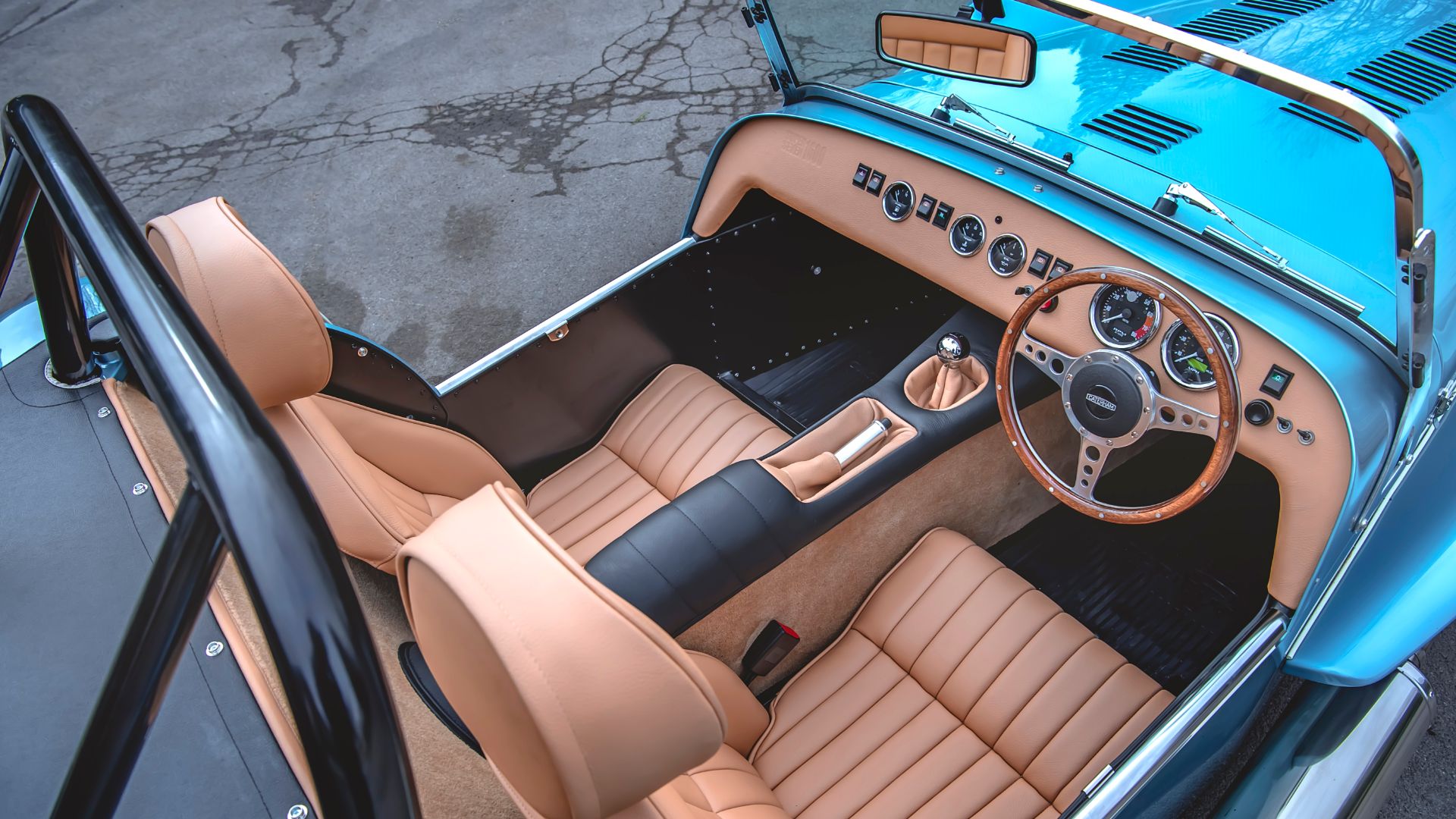
Inside, the Super Seven gets leather seats and classic white-on-black Smiths gauges, while this car also has a wooden Moto-Lita steering wheel (£300), leather-trimmed dashboard (£500) and armrests (£95).
Did I mention the hood and side-screen doors also cost extra? Yep, they’re £2,250.
Indeed, the total cost here comes to £39,655: quite a lot for a car with toggle switches for indicators, no radio and absolutely no driver aids. Still, as Caterham devotees will point out, that back-to-basics feel is part of its appeal.
Like a glove
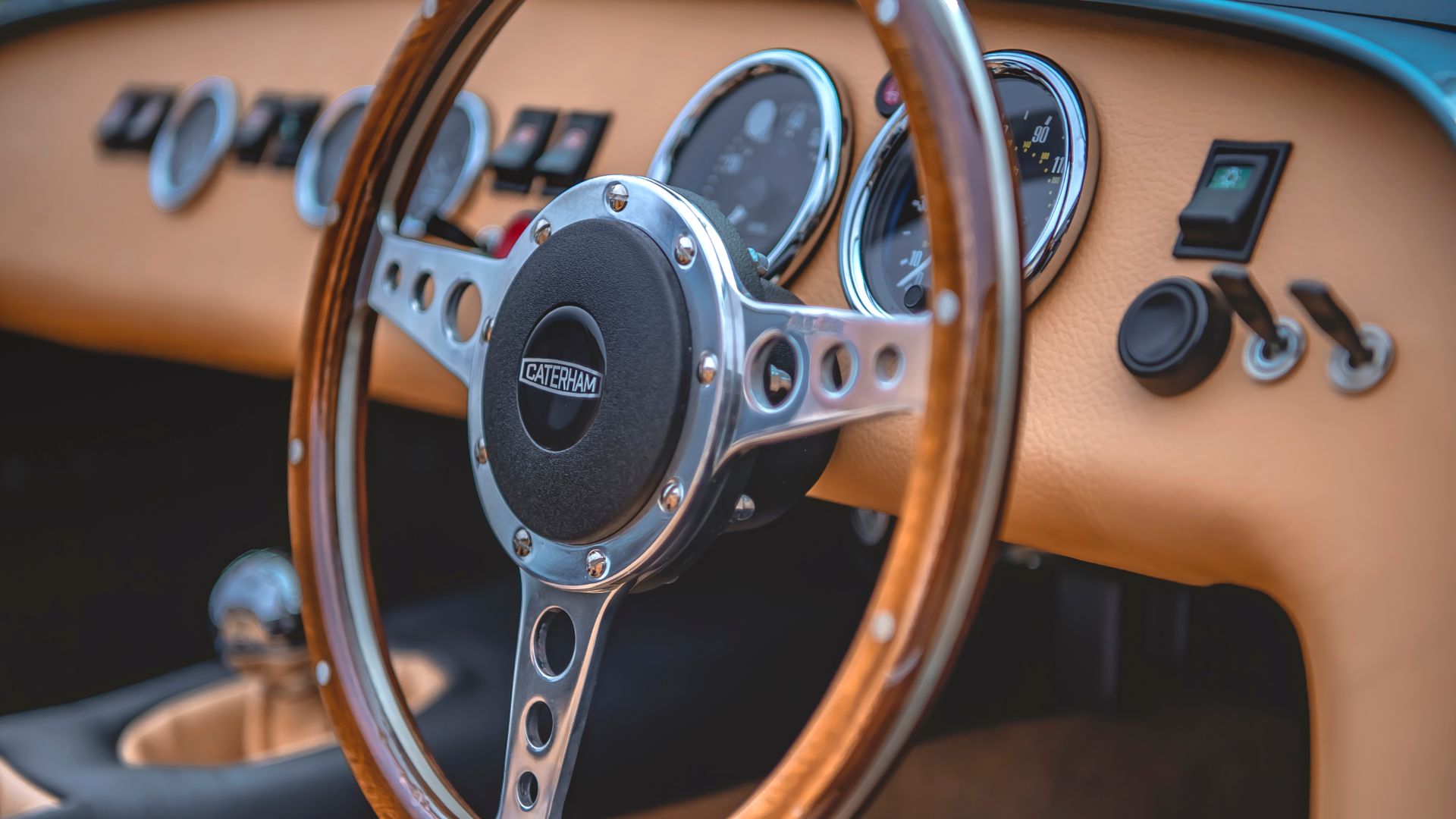
Stepping inside with the roof off isn’t too tricky, but some human origami is required with it in place. And if you’re wearing shorts, be careful not to burn your ankle on the scorching, side-exit exhaust. It’s a mistake you won’t make twice.
Even with this wider SV chassis, the Seven is a snug fit. Passengers may also need to stash bags around their feet, due to the total absence of luggage space. It’s certainly not uncomfortable, although shorter drivers – yours truly included – may find the seat doesn’t slide far forward enough.
Not that you’ll worry about practicality when you thumb the start button and the 1.6-litre Ford Sigma engine coughs rudely into life. The steering, throttle and short-throw gearshift feel instantly eager. After driving a ‘normal’ car, you’ll have to recalibrate your brain.
Seeing the light
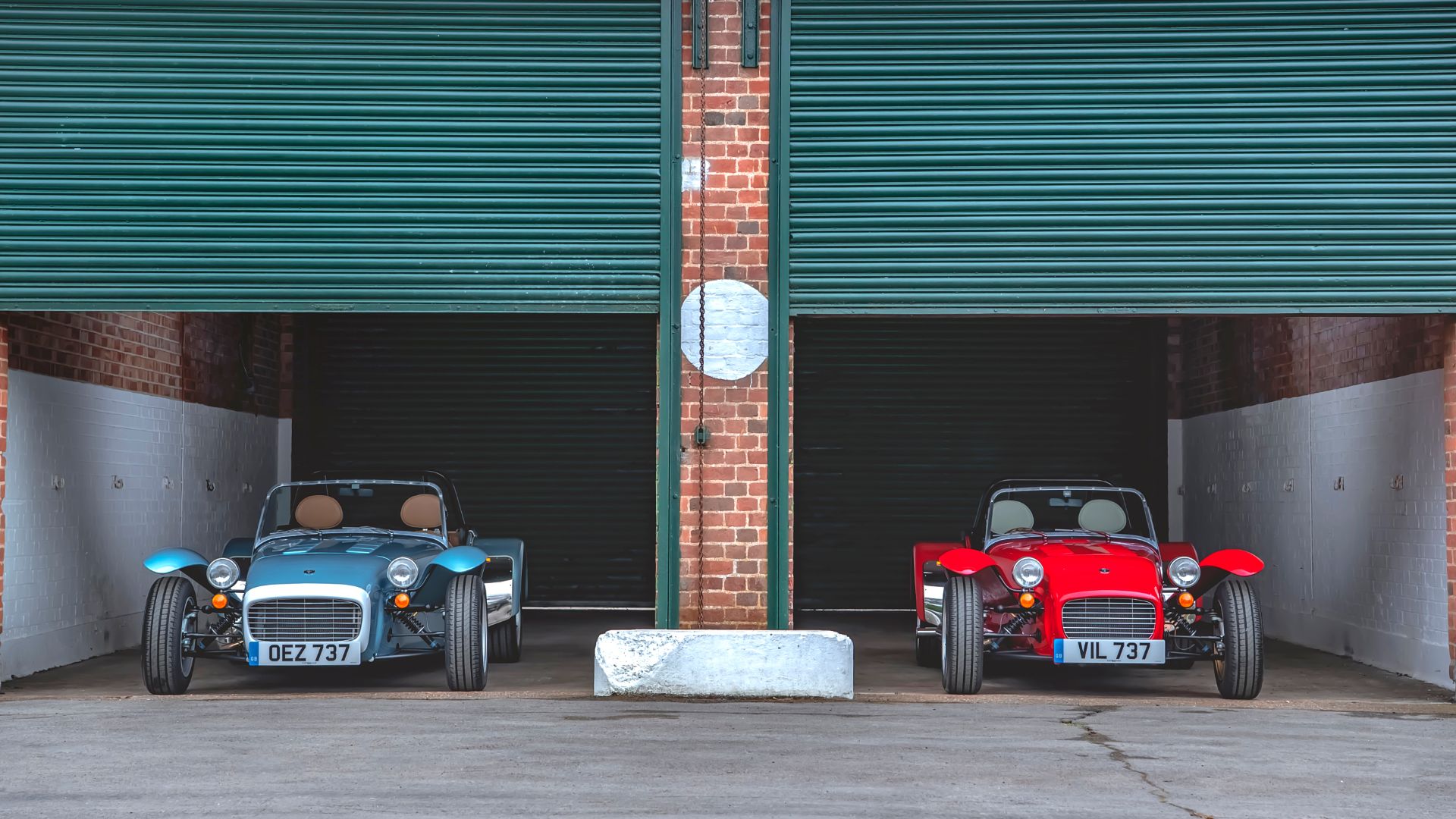
The twin throttle bodies look like a pair of Weber carburettors, and they respond like them, too. At low revs, the engine can feel rather jerky and hesitant, then it bursts uproariously into life.
This soundtrack, a mechanical cacophony of snorts and snarls, is the key difference versus the Seven 270 engine, which uses conventional fuel injection. On an open road, with the tailpipe barking into your right eardrum, it almost feels worth that extra £6,000 alone.
Here’s the Seven 310R modified by James May for The Grand Tour: A Massive Hunt. pic.twitter.com/yQMG97xNxF
— Tim Pitt (@timpitt100) March 30, 2021
As for performance, a kerb weight of just 565kg (a Ford Fiesta weighs 1,150kg) means you can blast to 62mph in 5.0 seconds – plenty fast enough to have fun. Top speed, thanks to the Seven’s decidedly ‘retro’ aerodynamics, is a less impressive 122mph.
More slip than grip
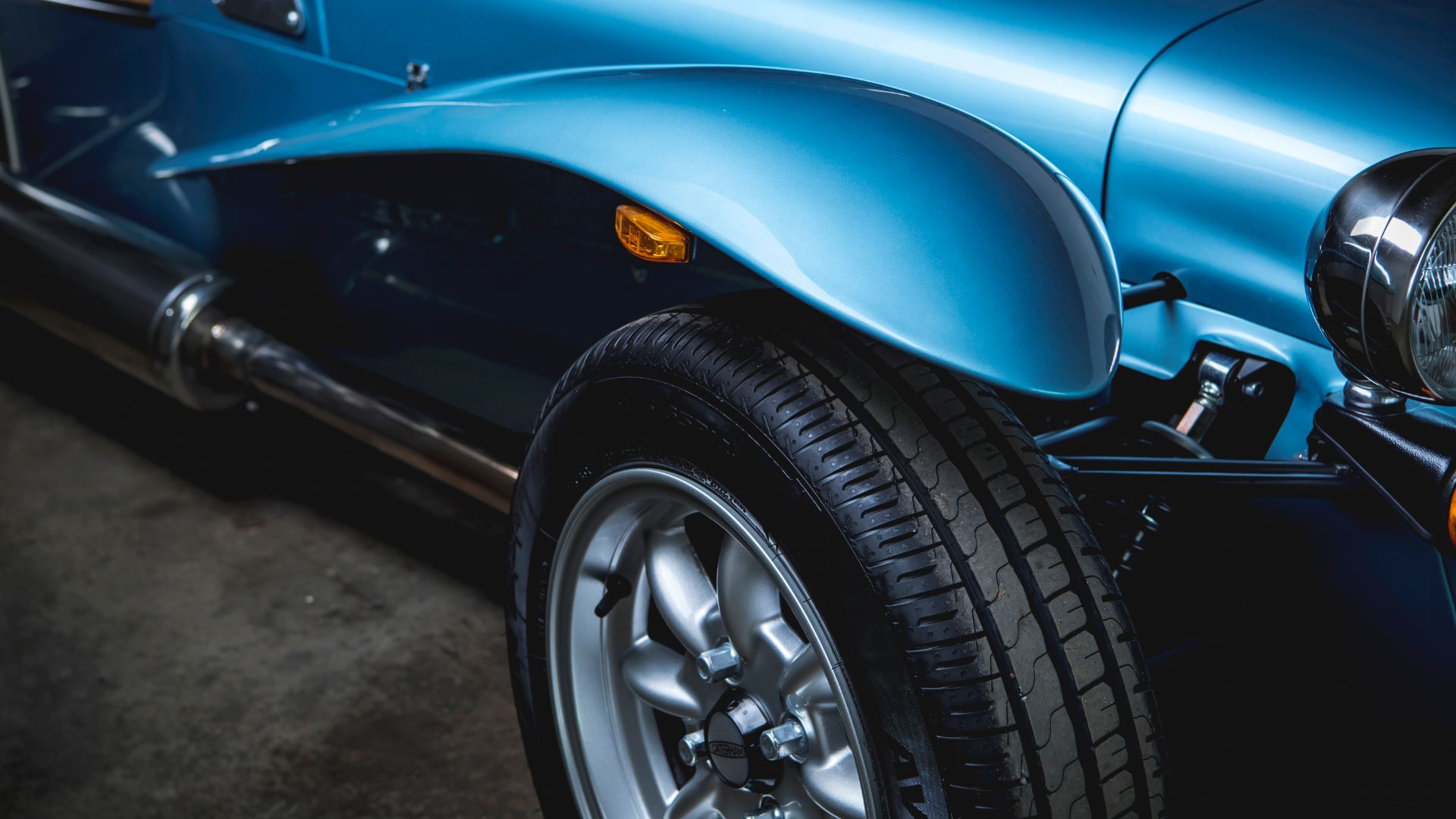
Caterham swapped the original Lotus live axle for De Dion rear suspension in the 1980s, but the Seven still has old-fashioned manners. You sit well back in the chassis, aiming the long, bug-eyed nose through corners, steering with your wrists and feeling the squidge of the soft Avon tyres.
The grip limit is low, particularly at the front end, and mid-corner bumps unsettle the car easily. It doesn’t have the fluidity and finesse of, say, a Lotus Elise.
However, it keeps you busy in a way that a modern car never will. You’re constantly making inputs, sensing the car’s movements and reacting to the road. That can be tiring, yet it’s also rewarding and great fun.
A unique experience
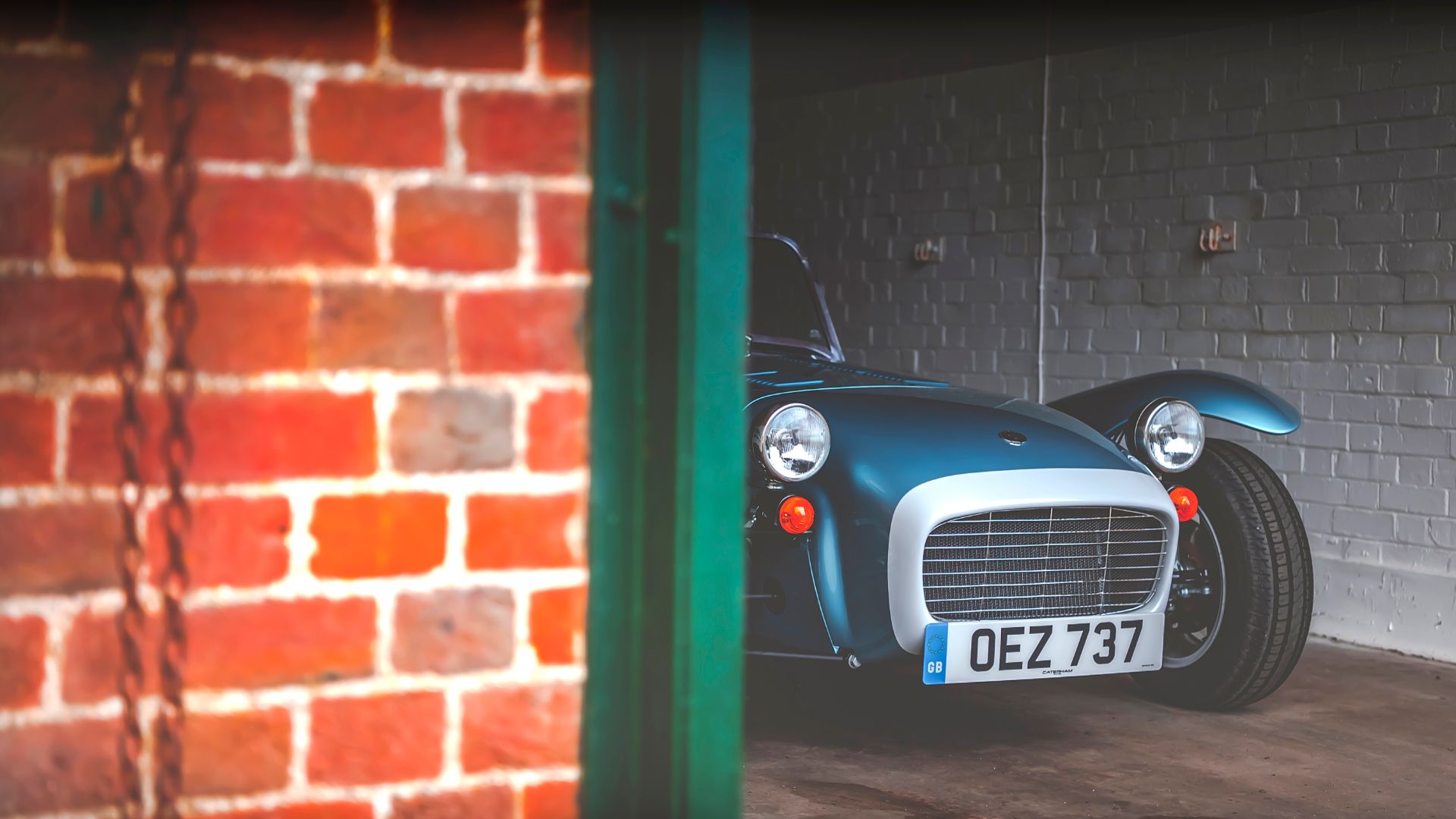
Me? I’d prefer a sports car with a little more civility, particularly if it’s purely for road use. But what do I know? The long waiting list (and glacial depreciation) of new Caterhams suggests many people think otherwise.
If you’re sold on the Seven, the standard 270 is much better value – and is brilliant on-track, as I discovered at Brands Hatch. Or you could buy the much faster Seven 420 (213hp, 0-60mph in 3.8sec) for only £1,000 more.
Whatever option you choose, there’s still nothing quite like a Seven. Just remember to check the weather forecast before you leave home.
ALSO READ:
A closer look at James May’s ‘Frankenstein’ Caterham Seven